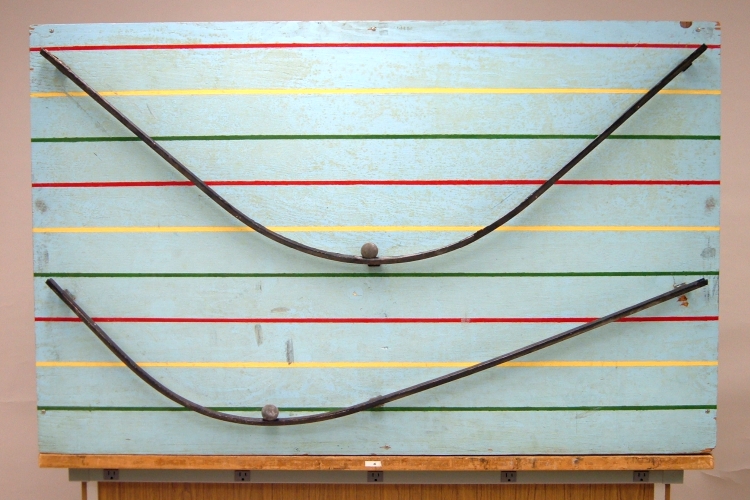
When you release one of the balls (1-1/2″-diameter polyurethane balls) from one colored line at either end of either track, it will almost reach the same line on the opposite side of the track.
This demonstration is closely related to demonstration 20.15 -- Potential well. The top track is similar to the one in that demonstration, in that it is symmetrical; the lowest point on the track, where the gravitational potential energy is lowest, is in the center of the track. The bottom track is skewed; the lowest point is somewhat to the left of center, and the slopes of the two sides are different. On either track, no matter on which side you release the ball, as it rolls to the bottom, its potential energy is continuously converted to kinetic energy. When it reaches the bottom, the ball has zero potential energy (relative to the bottom of the track; it cannot go any lower), and all of its energy is kinetic energy. It continues up the other side of the track, and as it does so, its kinetic energy is converted back into potential energy until the ball has only potential energy and zero kinetic energy. It should reach the same height, and so the same colored line, from which you originally released it. As the ball rolls along the track, however, it loses some of its energy to friction. So instead of reaching its original starting height, the ball rises to a slightly lower height.